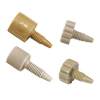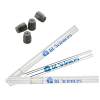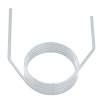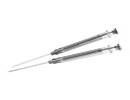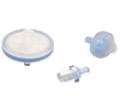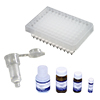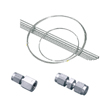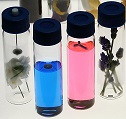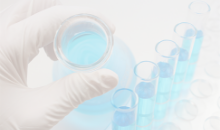Applications
Esters
Various kinds of ester determinations are associated with food analysis. Oils can be analyzed directly as triglycerides, or as methylesters of fatty acids by transesterification. For direct analysis as triglycerides, the sample is dissolved in a solvent such as hexane, and injected directly onto the gas chromatograph. In the case of samples containing a wide spread of carbon chain lengths, such as fats in dairy products, the triglycerides are first classified into short, medium and long carbon chains by separation using TLC, then each class is extracted and analyzed separately for such analysis. A short column packed with non-polar stationary phase with low loading, and high maximum operating temperature is chosen. Adsorption is unlikely and for analysis at high temperature, use of stailess steel column is highly recommended. Also in order to gain theoretical plates, a fine mesh of support and columns of 2 mm I.D. are commonly used. Fig. 1, 2 are analysis of triglycerides in coconut oil and butter on GS-1, which is equivalent to OV-1, and on OV-1, respectively. Alternatively, the oils can be esterified and analyzed as methyl esters of fatty acids. Three methods are generally used, i.e. boron trifluoride/methanol, sulfuric acid/methanol and sodium meth oxide. Here the boron trifluoride/ methanol method is most common. In this method, the oil is first saponified by heating in a solution of sodium hydroxide/ methanol, and the non-saponified residue is removed. To the saponified product, 14 % boron trifluoride/methanol solution is added, then conduct reaction mixture heated under refluxing in the water bath. When the reaction is completed, an ester layer is formed on methanol layer. After cooling, the ester is extracted by shaking vigorously with a mixture of petroleum ether and water, and the either layer is injected onto the gas chromatograph. In order to concentrate the methyl esters in the ether layer, unreacted compounds are completely removed by repeating the extraction several times until the aqueous layer shows no more acidity. Repeating the extraction also appears to be necessary to prolong the lifetime of the column. A fairly good separation of methyl esters of fatty acids of up to C22 can be obtained with Unisole-3000 (Fig. 4).






